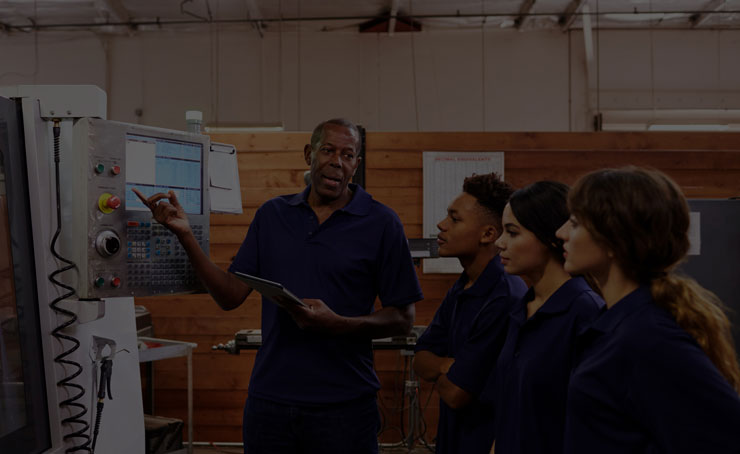Be a Blog Subscriber
Join thousands of manufacturing leaders and professionals who get the Accelerate blog delivered straight to their inbox


The bad news is the manufacturing skills gap is looming, threatening manufacturing’s future. The good news is we have the potential human resources — millennials and Gen Z — to solve it. But in order to attract these younger generations to manufacturing careers — and to train and retain them — we first need to understand them.
Tooling U-SME’s new white paper, Solving the Talent Challenge: Millennials and Gen Z in the Workforce from a Manufacturer’s Perspective, helps manufacturers gain a greater understanding of these individuals and provides actionable ideas on how to develop and celebrate them.
Understanding employees and accepting generational differences have always been important elements of success for manufacturers, but for the past decade or so, these efforts have been focused on millennials, who now surpass the number of baby boomers.1 And as millennials are moving into leadership roles, attention is turning to Gen Z.
According to Deloitte and The Manufacturing Institute, a deficit of up to as many as 2.4 million unfilled jobs by 2028 could put $2.5 trillion of U.S. gross domestic product (GDP) at risk.2 Added to COVID-19 hiring complications, ongoing baby boomer retirements, pipeline challenges, and the rapid rise of new technologies, such as artificial intelligence and robotics, these figures show a great need to address the workforce’s younger generations now.
To better understand millennials and Gen Z, Solving the Talent Challenge examines these groups separately and then together.
Making up more than a third of the workforce, and now moving into leadership roles, millennials (born 1981-1996) are better educated than previous generations. Yet, they have less wealth and property, more student debt3 and less optimism than previous generations. They are more interested in experiences such as travel and making a positive impact in their communities rather than owning a home and starting a family. While they feel positive about their use of digital devices and social media, a majority say they would be healthier and happier if they spent less time on social media.4 With the advent of COVID-19, millennials are taking the second economic hit of their lives, the first being when they entered the workforce during a recession.
Like millennials, members of Gen Z (shortened from Generation Z, born 1997-2012) are well-educated and have student debt. They are also racially and ethnically diverse5 and expect to see diversity and inclusion initiatives in the workplace. They are less likely to take risks and more likely to seek stability and security in their jobs, with student debt influencing their career choices.6 Technology is second nature to this generation.7
Both millennials and Gen Z are sometimes mislabeled as “difficult.” However, generational expert Mark Perna sees it differently. The author of Answering Why: Unleashing Passion, Purpose and Performance in Younger Generations , Perna calls millennials and Gen Z, collectively, the “why” generation — because in the classroom and at the workplace, it’s the question they ask most often in order to get the background information they need to forge a new path forward.
Millennials and Gen Z share experiences that shape their outlook, such as living in a world of economic uncertainty, fears about personal safety and digital dominance. Additionally, both groups were brought up in a world addressing issues such as social justice and climate change. With this background, it’s not surprising that many of those in both generations question the status quo, and desire change in their work lives as well as their personal lives.
Put simply, millennials and Gen Z are motivated more by mission and purpose than by paycheck, and a robust employee development program is their new must-have perk. “Today, it’s all about creating a compelling purpose and vision, and then communicating that message in both the recruitment process and the ongoing retention strategy,” says Perna.
To grow, prosper and thrive into the future, manufacturers will need to attract, retain and train the important — and inspiring — individuals who make up the millennial generation and Gen Z. To accomplish that, companies need to provide these individuals with:
In addition, companies should consider offering a contribution to debt reduction as a recruiting incentive.
Ultimately, employers must lift up all generations in the workforce to ensure that they are considered for development opportunities, promotions and other benefits. That way, contributors of all ages feel appreciated and rewarded and are likely to stay with the company.
This blog is the first in a three-part series to feature highlights from Tooling U-SME’s new white paper, “Solving the Talent Challenge: Millennials and Gen Z in the Workforce from a Manufacturer’s Perspective.”
Join thousands of manufacturing leaders and professionals who get the Accelerate blog delivered straight to their inbox